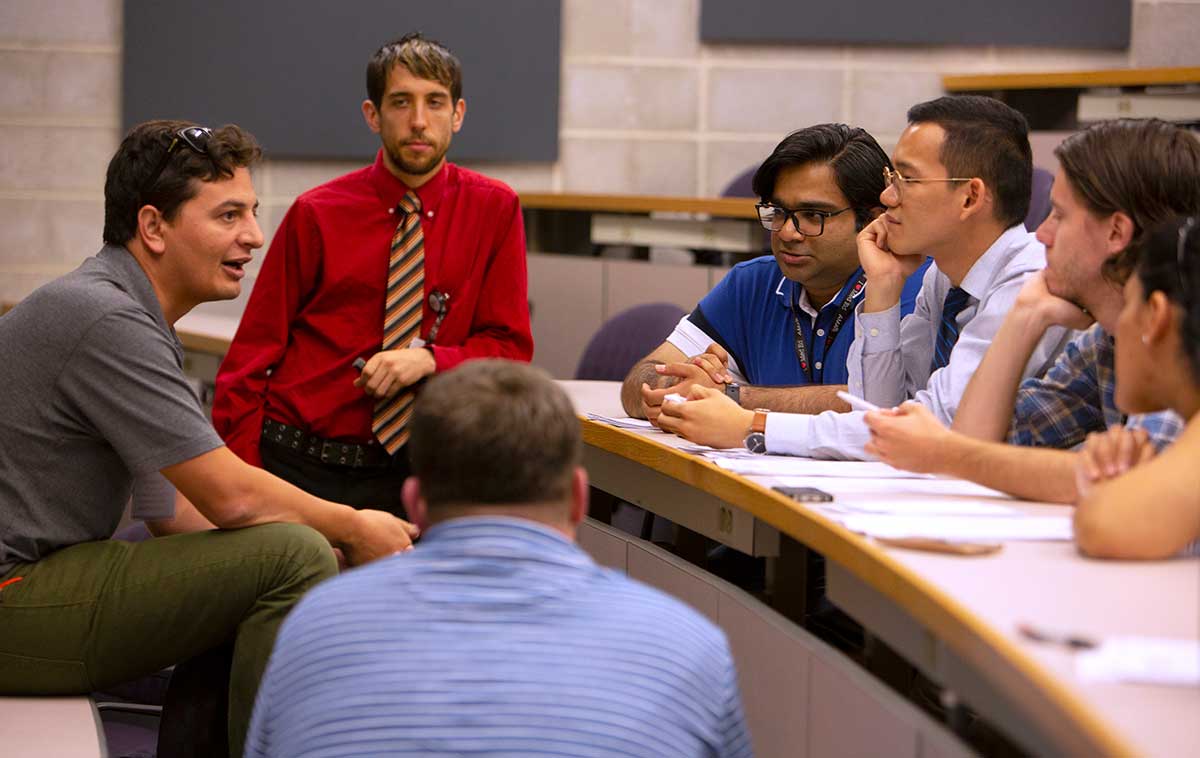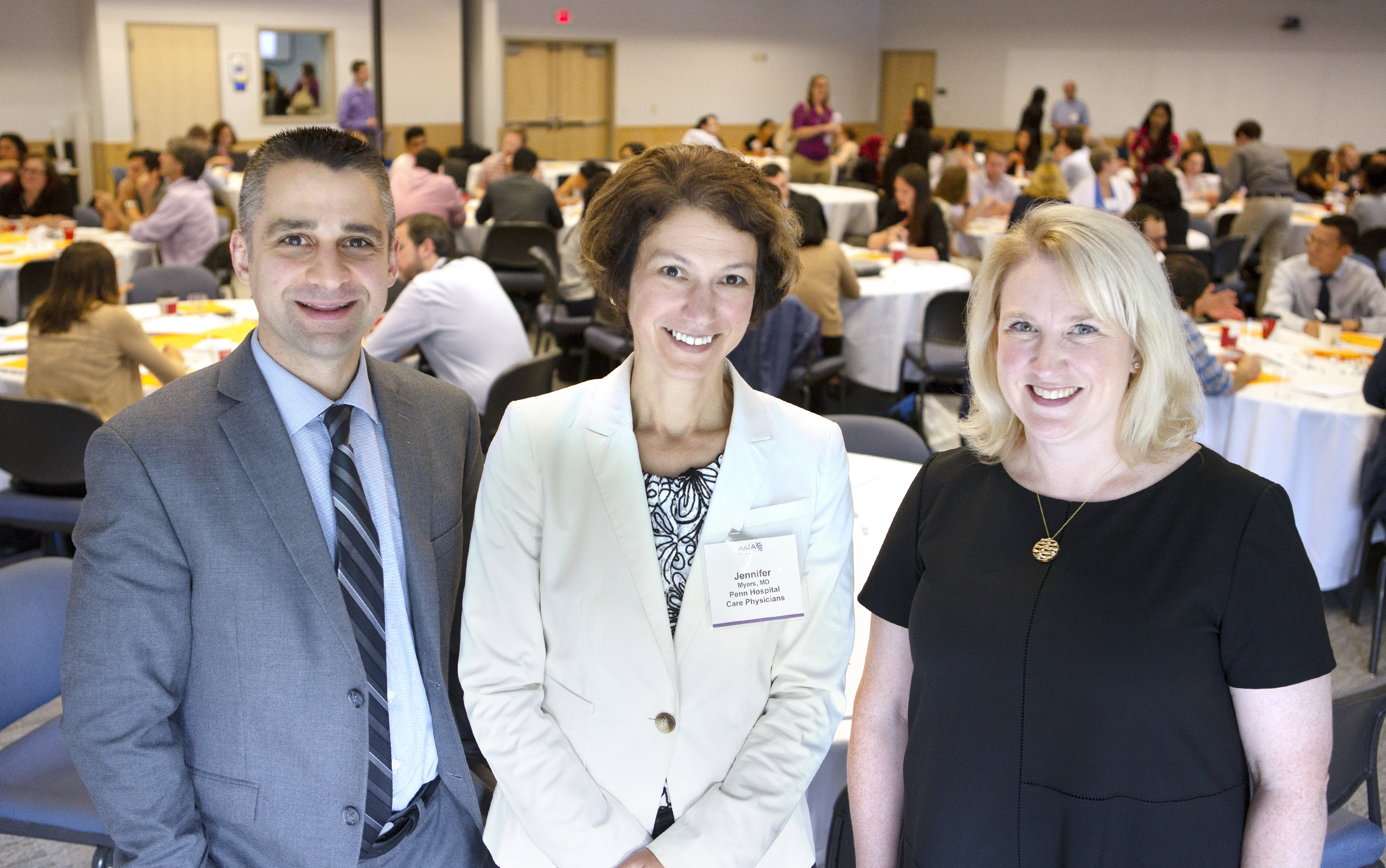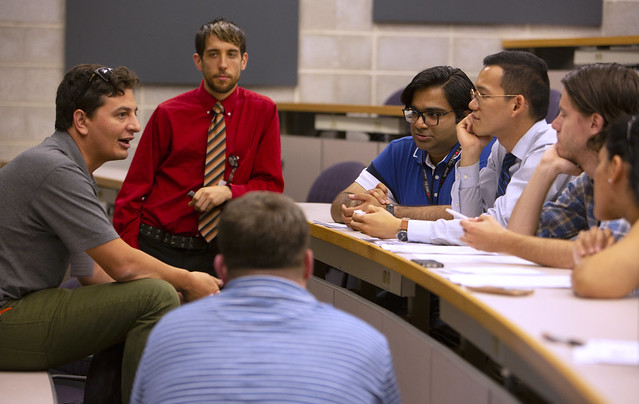Penn State College of Medicine leads transformation of medical education

Being selected to host the American Medical Association’s (AMA) “Accelerating Change in Medical Education” conference both acknowledged Penn State College of Medicine’s hard-won expertise in health systems science and enabled its leaders to share strategies for revolutionizing medical education.
More than 120 medical students, residents, physicians and educators from 27 schools across the U.S. attended the student-led consortium Aug. 3-4 in Hershey.
The College of Medicine has emerged as a leader in the field since receiving a $1 million, five-year grant from the AMA in 2013 to develop and implement curriculum changes supporting health systems science and medical education transformation.
“To me, health systems science is essentially good care. It’s not a separate entity—it’s being cognizant of all facets of your patient’s life, putting the patient at the center of your work and understanding how to make the system work for that patient,” says Amarpreet Ahluwalia, the College of Medicine student chosen to co-lead the planning of the AMA conference.
The AMA’s movement to improve medical education stems from the fact that little change had occurred in medical education in the United States since the early 20th century. For more than 100 years, education focused primarily on biomedical science and clinical science, despite decades of transformation to the health care system. And while doctors graduated well prepared to face the technical aspects of being a physician, it has become increasingly obvious that they are not well prepared for the navigational and administrative sides of practicing medicine.
“You can’t improve a system until you understand how that system works,” says Ahluwalia. “The goal for the conference was to look at the barriers and challenges and to celebrate the successes in health systems science in medical education across the continuum of learning.”
Together with co-leader and Penn State Milton S. Hershey Medical Center Internal Medicine and Pediatrics resident Dr. Michael McCann, Ahluwalia crafted a unique experience for attendees by broadening the spectrum from its historical students-only guest list to triads of one student, resident and faculty member from each of the 32 schools participating.
“The idea was to get every stage of learner at the table, sharing ideas, interacting and solving problems,” says McCann. “All of the workshops were set up to be engaging and productive, so that each team would go back to their school with an action plan or a list of ideas to begin implementing health systems science into their medical education in at least one practical way.”
See photos of the AMA Conference on Flickr.
College of Medicine students hosted and helped with day-of operations for the August event, and students, residents and faculty from the College of Medicine and many attending universities gave the talks and led the workshops.
“Our goal is to develop ‘systems citizens’—future physicians who see their role not just limited to diagnostics but also as a steward of the medical system to make sure it is safe and high value, so that patients get the best care they possibly can,” says Dr. Jed Gonzalo, associate dean of health systems education at the College of Medicine, who also played a role in organizing the conference.
The College of Medicine instituted a patient navigation training program, designed by Gonzalo and a team of educators, for all its medical students as part of the AMA grant. The program pairs students with at-risk patients to help patients better manage their own health care. What started as a one-week session several years ago has grown into more than a dozen health systems science programs across the medical school—including formal courses in each year of medical curriculum and a continuing education program for health professionals at the Milton S. Hershey Medical Center. Gonzalo also helped lead the writing of the original textbook on health systems science.
“Our model for medical education updates the long-time two-pillar approach of biomedical science and clinical science by adding health humanities and health systems science,” says Dr. Terry Wolpaw, vice dean for educational affairs at the College of Medicine. The aim is not to replace the valued skills and knowledge taught historically but to enrich them.
“Penn State College of Medicine is leading the way in transforming the way physicians are trained,” says Dr. Susan Skochelak, group vice president, Medical Education, at the AMA “The bold, innovative programs created and initiated at schools like Penn State are then shared and implemented across the country, resulting in physicians who are equipped from day one to work in a rapidly changing health care environment.
“Penn State’s Systems Navigation Curriculum, which embeds first-year medical students working as patient navigators in clinical sites throughout central Pennsylvania, was created to ensure students learn not only the basic and clinical sciences but also health systems science. This is an important innovation that allows medical students to add value to the health care system while learning critical skills.”
The College of Medicine is planning to grow the program even further, with efforts underway to create degree and certificate programs in the subject.
“We are proud that Penn State has been able to contribute to this transformation in medical education on the national stage—enough so that the AMA selected us to host the conference,” says Gonzalo. “We believe this work is at the vanguard of medical education transformation.”

From left, Dr. Jed Gonzalo, Dr. Jennifer Myers and Dr. Luan Lawson were the keynote speakers during the American Medical Association conference.
If you're having trouble accessing this content, or would like it in another format, please email Penn State Health Marketing & Communications.

